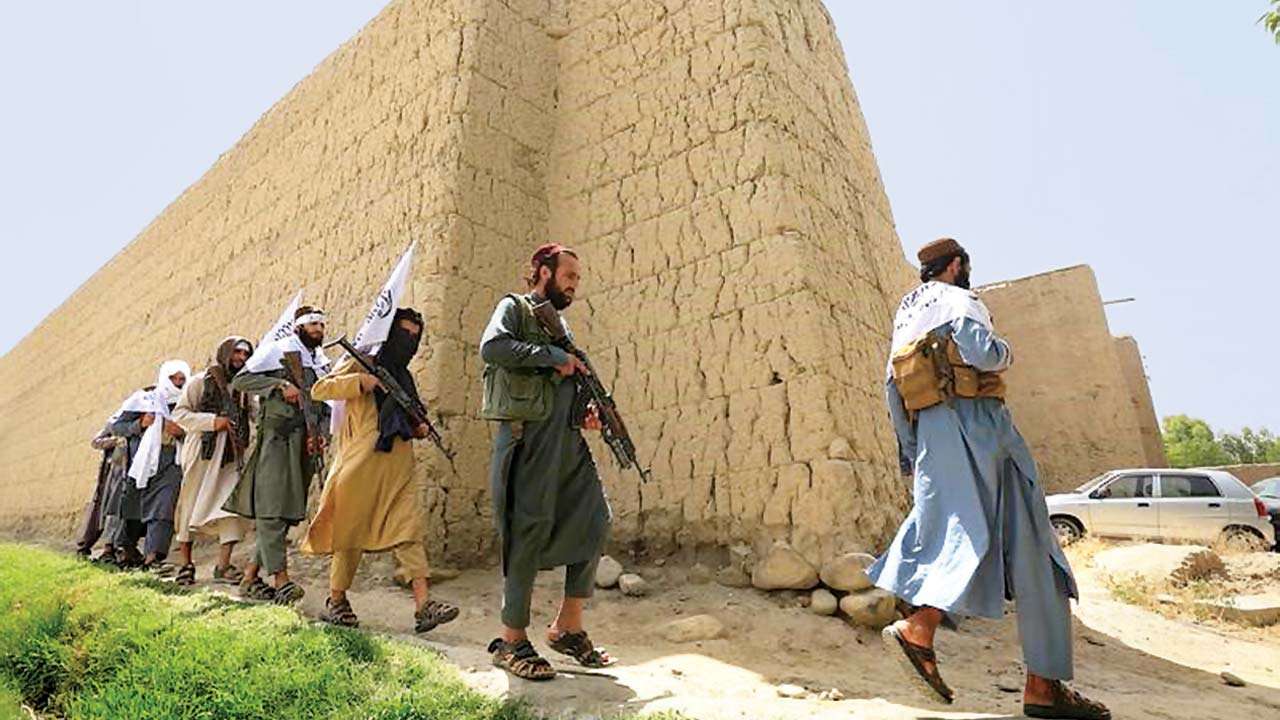
Afghanistan figured prominently at the tumultuous NATO Summit last week at Brussels. The mercurial businessman-President and Commander-in-Chief Donald Trump has a streak of Chengiz Khan: conquest in war and profit in trade. This became apparent soon after he assumed office when between dinner and coffee he informed Chinese President Xi Jinping, on his first visit to the US, that 75 US missiles had just struck an airfield in Syria following a chemical attack.
Earlier, Trump had authorised the use of the 11-ton ‘mother of all bombs’ against ISIS in Afghanistan showing that with him in office, the gloves are off. 3,900 heavy bombs – thrice as many as in the Obama era in 2016 – were used in Afghanistan hunting for Taliban, ISIS and the Haqqanis till end 2017.
Trump wanted to invade Venezuela but was dissuaded by advisors who cited the Bay of Pigs fiasco. Nevertheless, the US military is still the most powerful in the world and as Trump told Xi, he has given his Generals a free hand. The first General he wanted to sack long before NSA HR McMaster was John Nicholson, Commander Resolute Force in Afghanistan, because he was not winning the war. He lambasted the US’s most favoured non-NATO ally Pakistan for providing sanctuaries to terrorists who were killing US soldiers in Afghanistan.
The aggressive and sustained use of armed drones for targeted killings of the Taliban and Haqqani leadership in Pakistan was defence secretary Mattis’s idea. The legal justification for the use of drones, the US has argued after 9/11, is that it is in a state of armed conflict with Al Qaeda and its affiliates and has the right to self defence under Article 51 of the UN Charter. This led in 2001 to the Authorisation for Use of Military Force in pursuit of those responsible for terrorist attacks against the US.
The rules of engagement for drone strikes in Pakistan was a tacit understanding between General Musharraf and the US in 2004 to employ drones confined to the tribal areas of FATA. Military commanders had to provide a certificate that the target posed an imminent threat to US troops and civilian casualties would not occur. These rules did not apply to ISIS. Command and control of drones was highly centralised and strictly monitored and executed by the CIA, not the Department of Defence, as Pakistan was outside the recognised war zone. The Trump administration has since decentralised drone operations to the military.
Drone strikes against Pakistan started in June 2004 under CIA control. Initially airbases in Pakistan were used but after Bin Laden was plucked from Abbottabad in 2011, the bases had to be relocated to Afghanistan. During the George Bush-II period between 2004-09, 51 drone strikes were prosecuted in which 410 to 595 terrorists, 167 to 332 civilians and 102-129 children were killed.
In the Obama years, the aggregate strikes increased dramatically to 424 missiles fired between 2009 and 2016 with an estimated 2489-3919 terrorists; 423-946 civilians and 200 to 300 children killed. In this period, the strike rate progressively reduced from a high of 128 in 2010 to just 3 in 2016 including the last strike on 20 May 2016, which took out Taliban supremo Mullah Mansour on the Iran-Balochistan border far beyond the agreed area of engagement.
In 2017 Trump authorised his first drone strike on March 2 and till he delivered his first policy speech on South Asia and Afghanistan on August 22, 2017 giving a stern warning to Pakistan stating ‘we will no longer be silent about Pakistan’s safe havens for terrorists’, five drone strikes had been carried out. There was a sudden jump thereafter and between September 15 and December 26, 2017, nearly 80 strikes were recorded with the heaviest attacks occurring in October with an unprecedented 67 missiles fired taking out top Taliban and Haqqani commanders and an estimated 160-210 terrorists. Up to February 8, 2018, four drone strikes were counted, after which there was a sudden blackout on data about drone strikes.
Pakistan protested against the drone strikes, the bulk of which were executed in the Kurram agency. All figures of drone strikes in Pakistan along with estimated casualties have been sourced from the Bureau of Investigative Journalism which has monitored these operations in Pakistan and Afghanistan.
It was Mattis’s expectation that targeting Taliban and Haqqani commanders in Pakistan, especially the latter who relocated from North Waziristan to Kurram agency, would incentivise both Rawalpindi and the Taliban to join the Afghanistan reconciliation process. President Ghani’s Eid ceasefire and unprecedented offer of unconditional talks, it was thought, would persuade the Taliban for dialogue. But the Taliban think they will be in a better bargaining position after the ongoing summer offensive with four attacks a week.
Chances of starting even a flawed peace process have never looked better. The strategic utility of intensified drone strikes and other coercive measures against Pakistan are at test. Presidential and provincial elections are slated for October and Kabul will hope that a reconcilable Taliban will participate. Rawalpindi must see merit in the very liberal concessions made in the new offer of talks.
India has opposed unconditional talks that allow Pakistan’s proxies a power-sharing role in Kabul. The renewed commitments by NATO last week of additional troops and funding should make clear there is no exit of foreign troops any time soon though Trump desperately wants to end US’s longest war of choice. But it won’t be on the battlefield where three great powers — Britain, the former Soviet Union and America could not subdue the war-loving Pashtuns. So that is why on Monday, Trump finally agreed to talk to the Taliban.
The author is India convenor of a Track 2 regional approach to Afghanistan. Views are personal.